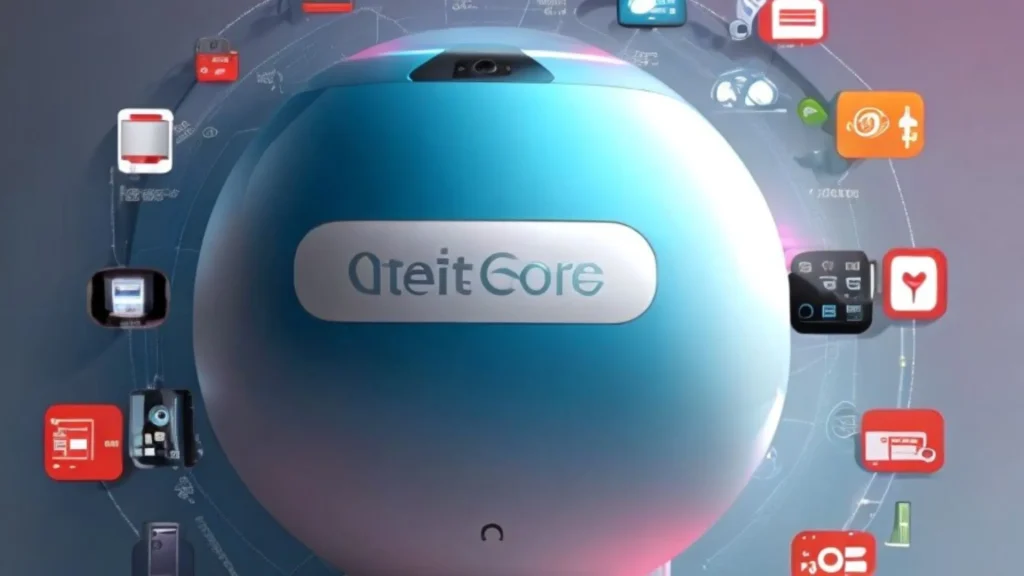Welcome to the world of the Internet of Things (IoT), where everyday objects are becoming smart, interconnected, and capable of communicating with each other. In this step-by-step guide, we’ll unravel the mysteries of IoT in easy language, exploring its foundations and real-world applications.

Understanding the Basics of Internet of Things (IoT)
Imagine a world where your thermostat talks to your smartphone, your refrigerator orders groceries, and streetlights adjust their intensity based on the time of day. This interconnected web is the essence of the Internet of Things.
The Core Concept – Connecting Devices
At its core, internet of things (IoT) is about connecting everyday devices to the internet and enabling them to send and receive data. This includes anything from household appliances and wearable devices to industrial machinery and vehicles.
How Internet of Things (IoT) Works
- Sensors and Actuators: internet of things (IoT) devices are equipped with sensors to collect data and actuators to perform specific actions. For example, a smart thermostat may have sensors to measure temperature and actuators to adjust it.
- Connectivity: Devices need a way to communicate. IoT relies on various communication technologies like Wi-Fi, Bluetooth, or cellular networks to transmit data between devices and to the cloud.
- Data Processing: The collected data is sent to the cloud for processing. Cloud platforms analyze and store the data, making sense of the information and providing insights.
- User Interface: Users interact with IoT systems through applications or dashboards. This could be a smartphone app to control smart home devices or a web interface for industrial machinery.
Key Components of IoT Ecosystems
- Devices: These are the physical objects with embedded sensors and connectivity, forming the IoT network.
- Connectivity: The various ways devices communicate, including wired and wireless technologies.
- Data Processing: Cloud platforms or edge computing devices process and store the data generated by IoT devices.
- User Interface: Applications and interfaces that allow users to monitor and control IoT devices.
Real-World Applications of IoT
- Smart Homes: IoT enables devices like thermostats, lights, and security cameras to be controlled remotely, enhancing convenience and energy efficiency.
- Healthcare: Wearable devices and medical sensors connected to the internet help monitor health conditions and provide real-time data to healthcare professionals.
- Industrial IoT (IIoT): In manufacturing, IoT optimizes processes by connecting machinery, improving efficiency, and reducing downtime.
- Smart Cities: IoT is used in urban planning, waste management, and transportation systems to create intelligent and sustainable cities.
Pros & Cons Of IoT
Benefits of IoT
- Efficiency: Automation and data-driven decision-making enhance efficiency in various domains.
- Convenience: Smart home devices and wearable tech offer convenience and personalized experiences.
- Safety: IoT applications contribute to safety through surveillance, monitoring, and emergency response systems.
Challenges and Considerations
- Security Concerns: Protecting IoT devices from cyber threats is crucial to prevent unauthorized access and data breaches.
- Privacy Issues: As more personal data is collected, concerns about privacy and data protection arise.
- Interoperability: Ensuring different IoT devices and systems can work together seamlessly is an ongoing challenge.
The Future of IoT
The Internet of Things is continuously evolving. From advancing technology to addressing challenges, the future holds promises of even greater connectivity, efficiency, and innovation.
In conclusion, the Internet of Things is a transformative force shaping the way we live, work, and interact with the world around us. As we navigate this interconnected landscape, the potential for innovation and improvement in various aspects of our lives is truly boundless. Welcome to the era of the Internet of Things!